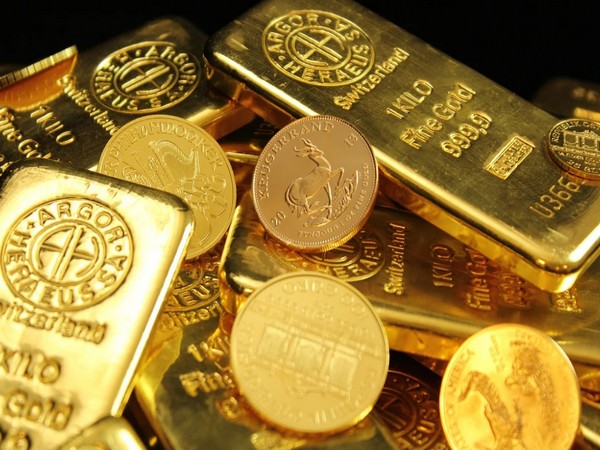New Delhi [India], August 24 (ANI): Domestic gold prices have risen by 10 per cent on a year-to-date basis on the back of the strength in global gold prices, which have surged by 18 per cent year-to-date, driven by robust central bank purchases, heightened geopolitical risks, and growing expectations of a monetary policy pivot from the US Federal Reserve, according to the World Gold Council.
The reduction in import duty has ignited a resurgence in gold demand across India. Reports from the recently concluded India International Jewellery Show indicate a substantial increase in order bookings from retailers, particularly in preparation for the upcoming festive and wedding season.
Manufacturers have noted that in some cases, orders have reached levels not seen in several years, underscoring the strong buying interest among jewellery retailers and consumers alike.
The trend of bar and coin buying has also remained robust, with both consumers and jewellers capitalizing on the more attractive prices to stock up for future manufacturing needs.
Historical analysis suggests that Indian consumer demand, encompassing jewellery and bar and coin demand, could see an additional 50 tonnes or more in the second half of 2024. This potential increase is fueled by a combination of an initial boost in consumer appetite due to the more attractive prices and a longer-term alignment of local prices with international rates.
In a notable shift, domestic gold prices, which had been trading at a discount to international prices for five consecutive months, have now started trading at a premium following the Union Budget announcement.
The discount had widened significantly in July, reaching a peak of around USD 80 per ounce in the third week of the month, driven by subdued demand and an increased supply of gold through various preferential trade agreements and unofficial channels.
However, wholesalers who had inventory purchased under the old customs duty regime began selling gold at a premium to the landed cost to mitigate their losses, further supported by increased consumer demand.
While the premiums have moderated recently, from USD 28 per ounce to around USD 5 per ounce, this shift highlights the changing market sentiment and the impact of rising international gold prices and potential inventory valuation adjustments.
The changes introduced in the Union Budget, including a reduction in the long-term investment holding period and a lower tax rate, have made gold ETFs a more attractive investment option.
Data from the Association of Mutual Funds in India (AMFI) reveals that net inflows into gold ETFs in July amounted to Rs 13.4 billion (approximately USD 160 million), marking the highest monthly inflows since February 2020 and an 84 per cent increase compared to June 2024.
Despite these inflows, the total assets under management (AUM) for Indian gold ETFs grew marginally by 0.3 per cent from the previous month, reaching Rs 345 billion (USD 4.1 billion). This modest increase can be attributed to the 8 per cent fall in domestic gold prices following the import duty reduction. Year-to-date, net inflows into Indian gold ETFs have totalled Rs 45 billion (USD 543 million), with total AUMs rising by 48 per cent from a year ago.
The Reserve Bank of India (RBI) has continued its gold purchasing trend, although at a slower pace following a significant increase in June, when purchases reached 9.3 tonnes–the highest monthly total in nearly two years.
Year-to-date, the RBI’s gold acquisitions have totaled 44.3 tonnes, surpassing the total purchases of the past two years combined. The RBI’s gold reserves have now reached a record 849 tonnes, representing 8.8 per cent of total foreign reserves, compared to 7.5 per cent a year ago.
In July, gold imports remained steady at USD 3.1 billion, maintaining the stable trend observed over the previous three months. Between April and July, imports averaged USD 3.2 billion, with volumes ranging between 43 and 47 tonnes during this period. The gold import bill for July 2024 was 11 per cent lower than the previous year, with an estimated 26 per cent decrease in volume terms, around 47 tonnes.
Despite a surge in international gold prices, domestic gold prices in India have experienced a notable decline, primarily due to the 9 per cent reduction in import duty announced in the Union Budget 2024-25. This policy change has led to a 6 per cent decrease in the landed cost of gold, marking a shift in the domestic gold market dynamics. (ANI)
Disclaimer: This story is auto-generated from a syndicated feed of ANI; only the image & headline may have been reworked by News Services Division of World News Network Inc Ltd and Palghar News and Pune News and World News
HINDI, MARATHI, GUJARATI, TAMIL, TELUGU, BENGALI, KANNADA, ORIYA, PUNJABI, URDU, MALAYALAM
For more details and packages











